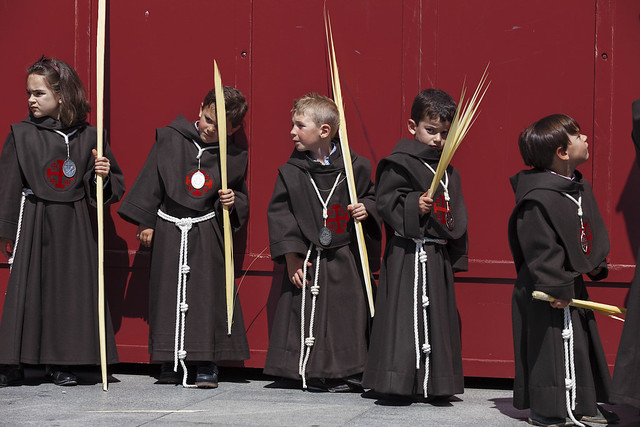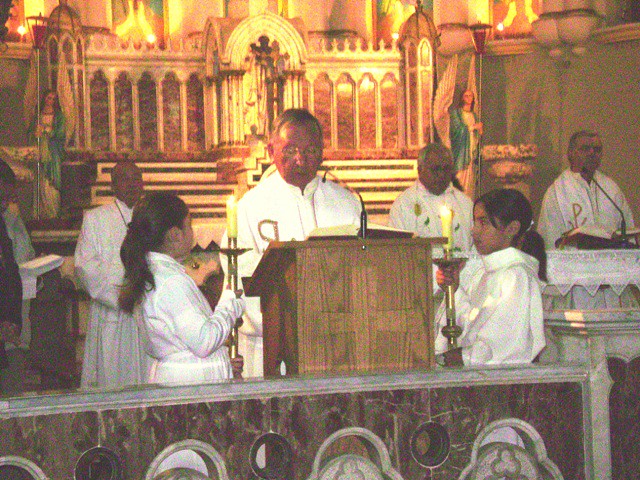Easter is celebrated by Christians across the world — this day marks the resurrection of Christ from his tomb. Mexico’s religious division is as follows: 83% of its citizens identify as Roman Catholic while the remaining 10, identify as another Christian dominion. Consequently, there is a
rich Easter culture in the country. Next, to Christmas, Semana Santa is the most widely celebrated holiday in Mexico. Taking place a week before Easter, Semana Santa involves week-long celebrations, masses, and processions.
Traditions of Semana Santa or Holy week first began in Spain and was brought to the new world by Spanish conquistadors. Although the Inquisition did wipe out the country’s indigenous population, they did leave a lasting impression on Mexico’s locals. This particular practice is
deeply rooted in the country’s cultural heritage and has survived revolutions. It is integral to Mexico’s social structure today. The traditions are introduced with Domingo de Ramos or Plan Sunday and end with Lunes de Pascua or Paschal Monday. The celebrations are amalgamations
of happiness and excitement, they are filled with laughter, tears, and color.
Palm Sunday or Domingo de Ramos
Palm Sunday of Domingo De Ramos is the Sunday prior to Easter. This day is symbolic of Jesus’s arrival in Jerusalem. According to the Bible, Jesus rode to Jerusalem on a donkey and people laid down palm branches on his path through the street. Each year, several plays
reenacting his entry are staged. These are typically in the form of processions and definitely worth a watch! To be a part of these plays is an incredible honor and actors have been known to deliver inspiring performances. Each region of Mexico has its own rendition and commemorate
his arrival in distinct ways. Not all of these versions are peaceful — many of them involve physical torture and public displays of ridicule.

Maundy Thursday or Jueves Santo
Holy Week’s Thursday is known as Maundy Thursday or Holy Thursday. This day reflects the apostles washing their feet, the Last Supper and Christ’s arrest in Gethsemane. Typically, Mexican traditions of the day include visiting seven churches to remember the vigil the apostles
held, leading up to Jesus’ arrest. Many stores and businesses are also closed on this day as well as Good Friday.

Good Friday or Viernos Santo
Good Friday or Viernos Santo illustrates the crucifixion of Christ. As a natural course of events. solemn religious rites are usually performed on this day. Several communities also partake in processions where statues of Jesus and the Virgin Mary being paraded around the streets of
Mexico. Passion plays portraying the trial of Jesus and his death are also enacted. Each year, the Iztapalapa borough of Mexico City performs the largest one, attracting thousands of visitors from across the world.

Holy Saturday or Sabado de Gloria
Many communities across Mexico like to spend this day burning effigies of Judas i.e. the apostle who betrayed Jesus. This is said to be a tradition derived from Spanish culture. In the olden days, carpenters in Spain would craft wooden dolls symbolic of Judas. These would then be
hung and burned on the streets as an act of vengeance. The Mexicans incorporated this tradition into Holy Week. Rather than using wood, figures are made from paper machete and are dressed as unpopular political figures. The dolls are hung and blown like fireworks in celebration, children
rush to scatter the limbs of these disfigured dolls as souvenirs of Holy Week. Famous Mexican artists, like Diego Riviera and Frieda Kahlo beloved in using the medium of art as a form of political commentary and started making Judas figures themselves.
Easter Sunday or Domingo
Unlike several parts of the world, Easter Sunday in Mexico doesn’t involve candied rabbits or colorful eggs. Typically, this day is spent in Church at Mass, after which families resume to a quiet evening. This is a time of relaxation, people may choose to go on vacation and enjoy one
another’s company. If you are not one for peaceful relaxation, there are some parts of Mexico that offer a more lively alternative, featuring fireworks, processions, music, and dancing!
Holy Week is a joyous time — schools are closed for a period of two weeks and families come together for Spring and rebirth. The festive air is contagious. People take to the streets and beaches, the intoxicating smell of food lingers and sweet music drowns our sorrows. For the
entirety of the week, performers dance and sing through Mexican towns. Children and adults alike, indulge in a traditional Easter favorite — Ice Cream! Previously, ice cream carts were paraded through the city during this time of year. Pilgrims would trek up the slopes of
Popocatépetl (Mexico City’s volcano) to retrieve the glistening snow. Fresh fruits like pineapple, melon, and tamarind were then added for an extra kick of flavor.
Ice-creams were not the only sweet treats for sale. These vendors also made fresh fruit bars, known as paletas as well as Raspados. Alternately, these were snow cones — popular amongst school children on hot sunny days. During Semana Santa, these vendors pushed their way
through crowded streets and gathered in front of churches or the plaza. Their distinct cry signaled their arrival, and people would flock to get a taste of these scrumptious desserts. Semana Santa is a spiritual time for the people of Mexico and a wonderful experience for adventurous tourists.
Traveling During Holy Week
If you want to visit Mexico during Semana Santa, remember to plan ahead and make advanced bookings. As this is one of the busiest and driest times of the year, people escape the crowd and heat by visiting the beach. Be prepared for chaos and adventure, as this is an experience of a
lifetime! Consult with a travel guide for further details.
